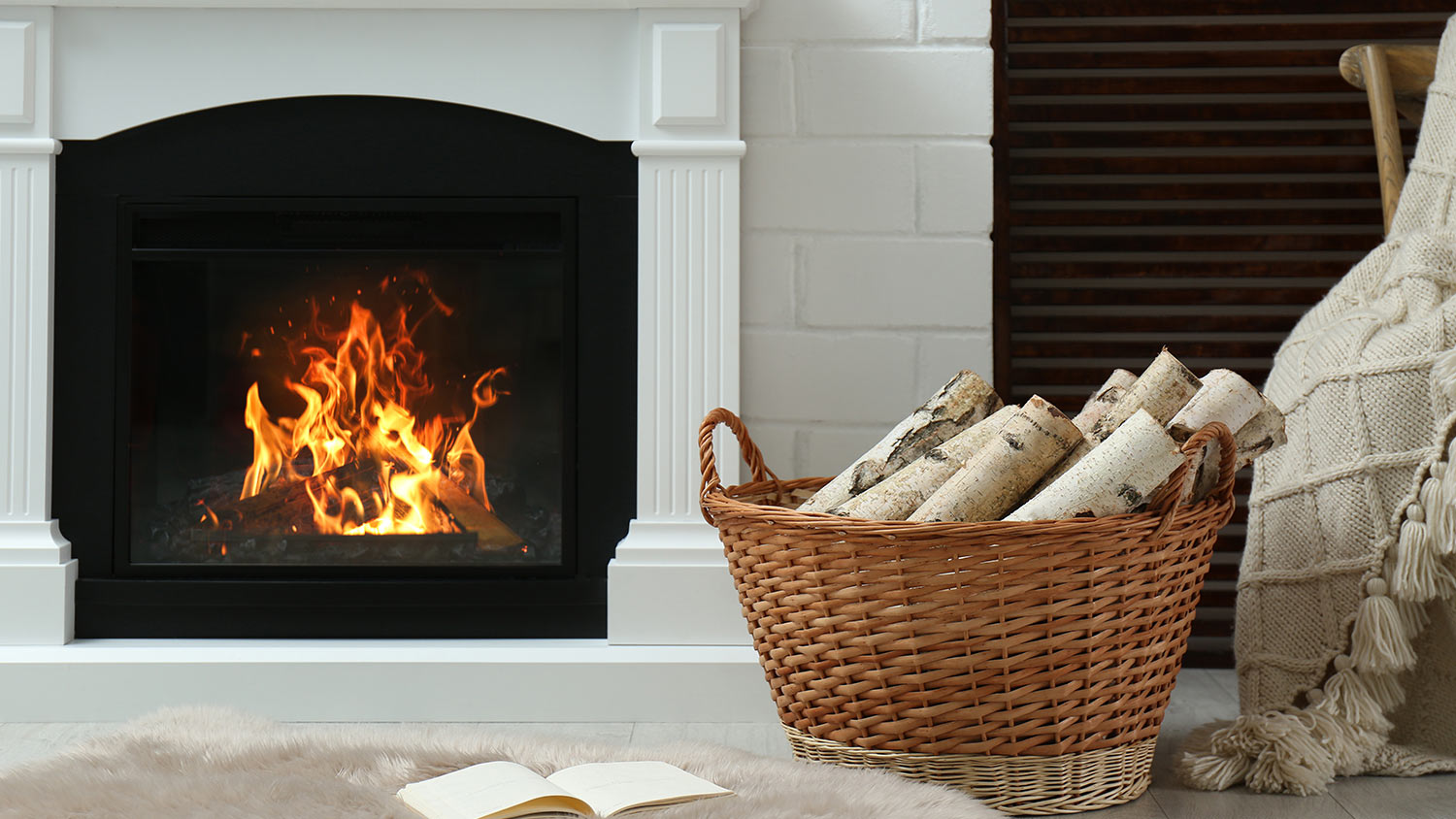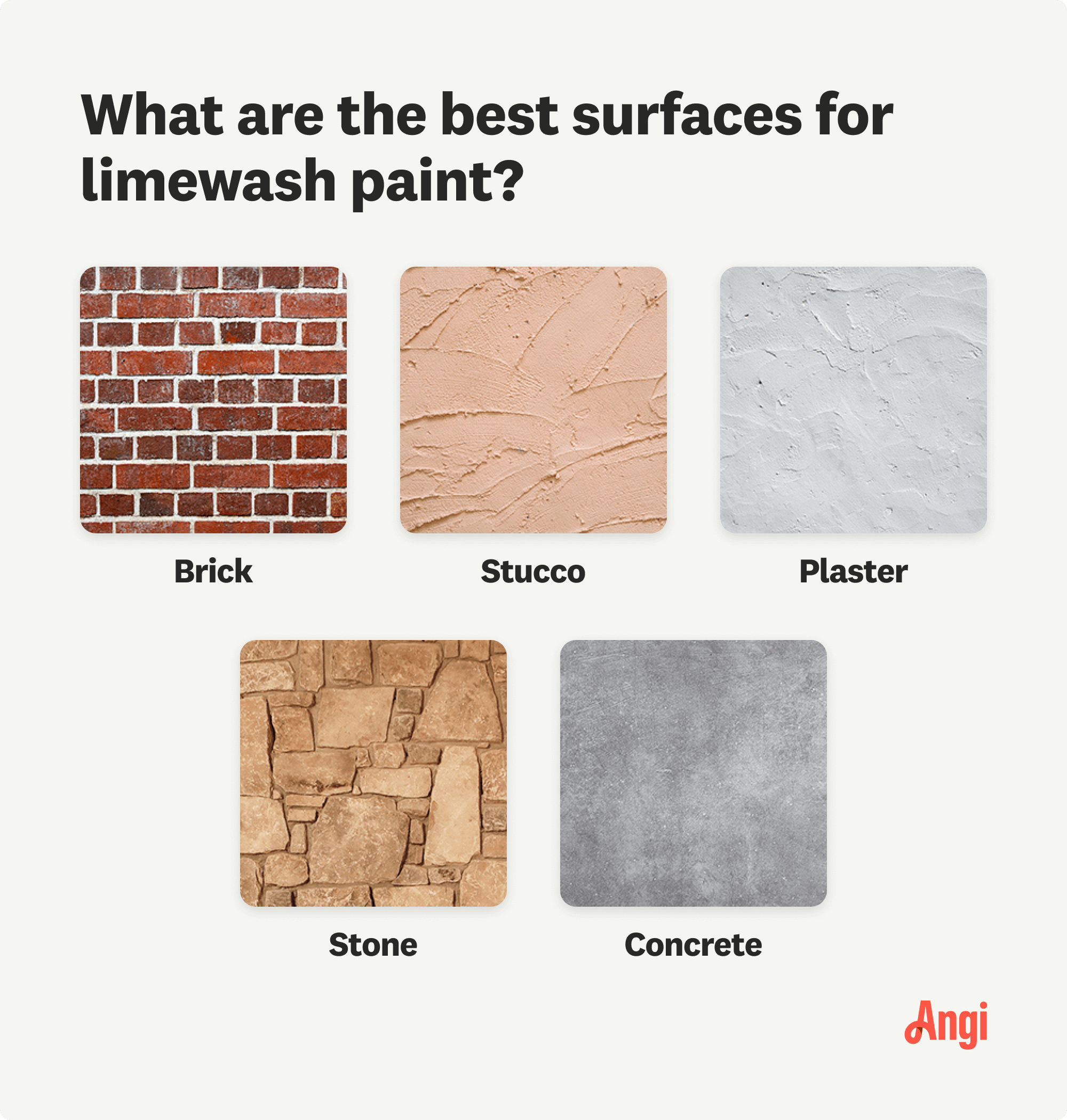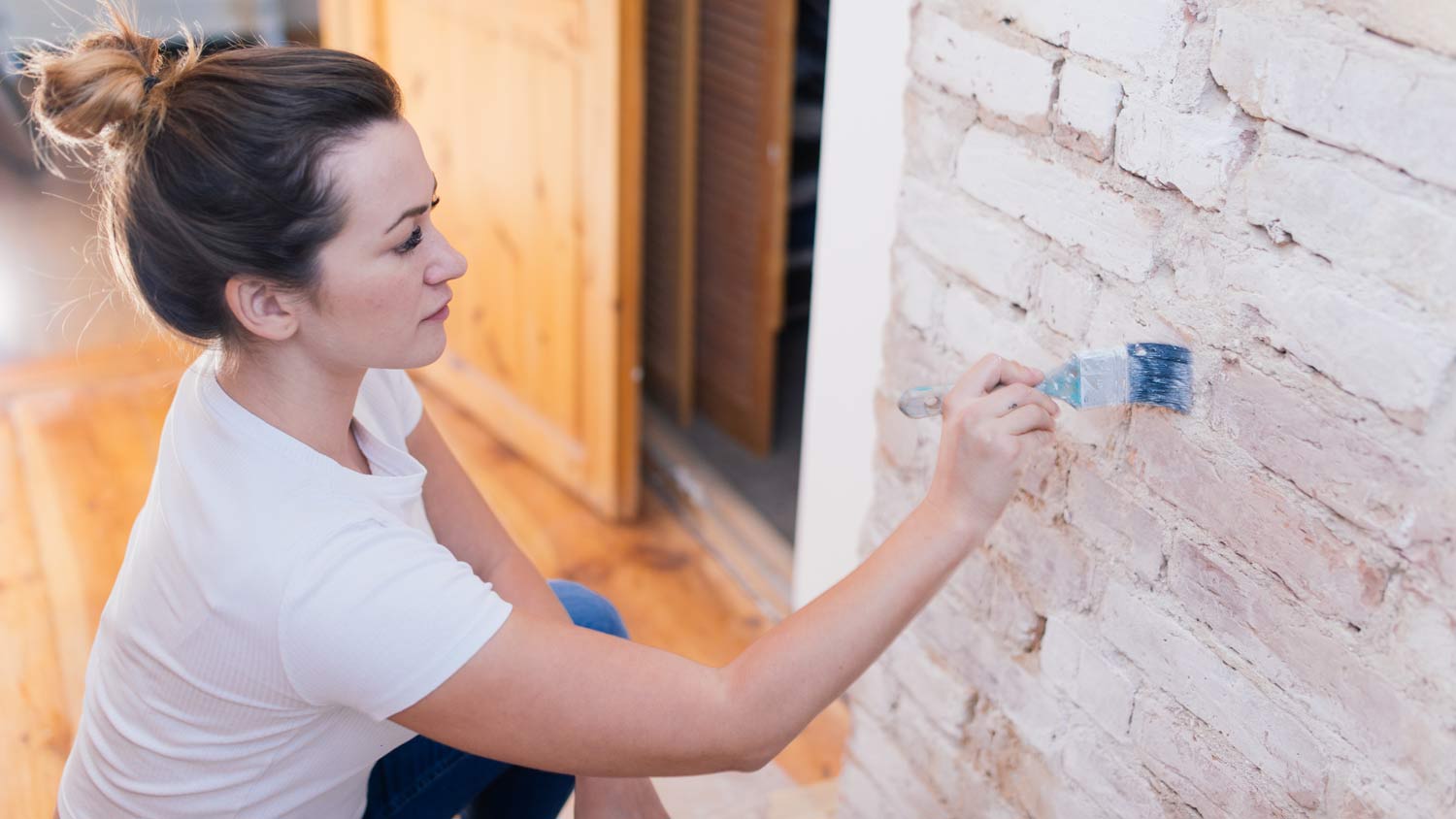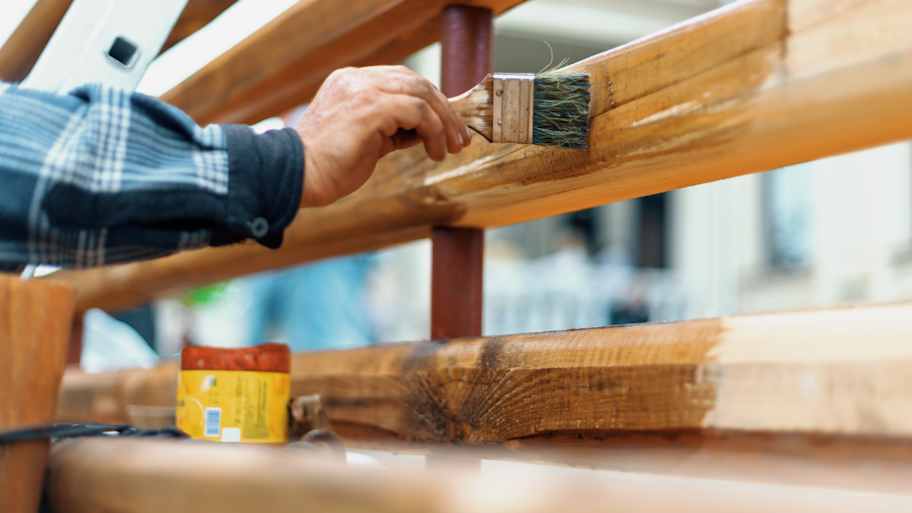
Wondering about the cost to paint a fireplace? Get a detailed guide to prices, key factors, and money-saving tips for your fireplace painting project.
It's all about the cover-up


Whitewash is a type of material similar to paint that is used to cover up surfaces. In some cases, it is watered-down paint.
It’s a budget-friendly alternative to modern paints.
You can apply whitewash to wood, brick, or other interior surfaces.
Whitewash is similar to, yet distinct from, other techniques such as limewashing and German schmear.
If you want to give your home's interior that rustic look, whitewashing the walls or exposed brick is one place to start. But what is whitewashing, and how is it different from other painting techniques? Whitewashing involves the use of a white liquid mixture to whiten your home’s surfaces, but it's not traditional paint. Let’s take a closer look.
Whitewashing is a method of covering up surfaces that's been around for centuries. Traditionally, whitewash is made from a mixture of water and slaked lime or chalk. In modern times, people make whitewash by diluting latex house paint with water at a ratio of 1:3 or 1:4.
As you may assume from the name, whitewash is white in color. When it was used in the old days on farms, one of its goals was to brighten up the dark interiors of barns. Because of the lime or chalk in the mixture, whitewash also helped to repel insects and keep mold and mildew away.
You or a local interior painter can use whitewash in the interior of your home anywhere you'd like to have a farmhouse, rustic vibe. For example, one popular use of whitewash is to brighten up exposed brick, such as around a fireplace. You apply the whitewash to the brick just as you would a coat of paint.
You can also apply whitewash to solid wood, such as a wood-paneled wall or floor. While somewhat less common, it's also possible to use whitewash on drywall or plaster.
Whitewash is sometimes confused with limewash since both painting techniques traditionally involve the use of lime and provide a similar, chalky finish. However, there are distinct differences between limewash and whitewash.
Limewash paint is made from slaked lime and water, just like whitewash. However, unlike whitewash, limewash occasionally contains pigments, so its finish isn't necessarily white.
Both whitewash and limewash are used on porous surfaces, such as brick. However, limewash can also be used on materials such as stucco, concrete, and stone. Since the material absorbs the limewash, the finish tends to be more durable and long-lasting compared to whitewash.


Another technique used to give surfaces a rustic appearance is German schmear. While it may sound like something you'd put on a bagel, it's actually a type of brick wash made from mortar or cement and water. Thanks to the mortar, it's considerably thicker than whitewash and somewhat more difficult to apply.
The final results from a coating of German schmear are also notably different than whitewash. It has a rougher texture, creating a more uneven look on the brick. Whitewash, in contrast, gives brick a relatively uniform appearance.
Another notable difference between whitewash and German schmear is where you can apply the coating. German schmear is typically reserved for use on brick, while you can apply whitewash to brick, wood, and various other materials.
If you decide to use whitewash, there are several benefits of doing so:
It lets the beauty of the materials shine through: Depending on how dilute your whitewash mixture is, it can be relatively transparent or semi-opaque, allowing the natural wood grain or brick texture to show through.
It's long-lasting: A coating of whitewash can last up to 30 years.
It's affordable: Since whitewash can be made from watered-down paint, it's relatively economical.
It's low-maintenance: After whitewashing a surface, you can apply a coating of polyurethane to seal it and extend its life, making the whitewash relatively easy to maintain. Even without a polyurethane seal, whitewash doesn't require much in the way of upkeep.
From average costs to expert advice, get all the answers you need to get your job done.

Wondering about the cost to paint a fireplace? Get a detailed guide to prices, key factors, and money-saving tips for your fireplace painting project.

A new coat of paint can transform your bathroom and improve home value. Learn about the cost to paint a bathroom and what factors affect the total.

The cost to paint the interior of a house depends on size, layout, type of surface, and more. Learn what factors can influence your total in this guide.

Knowing how to paint stair railings is a useful trick in your DIY bag. Here are the simple steps necessary to achieve a professional-looking job.

Trying to decide between oil-based and water-based stain? Learn the pros, cons, and best uses to find the right finish for your next wood project.

Knowing what type of paint is ideal for your project will give you the best results. Learn about different types of paint and what to use them for.